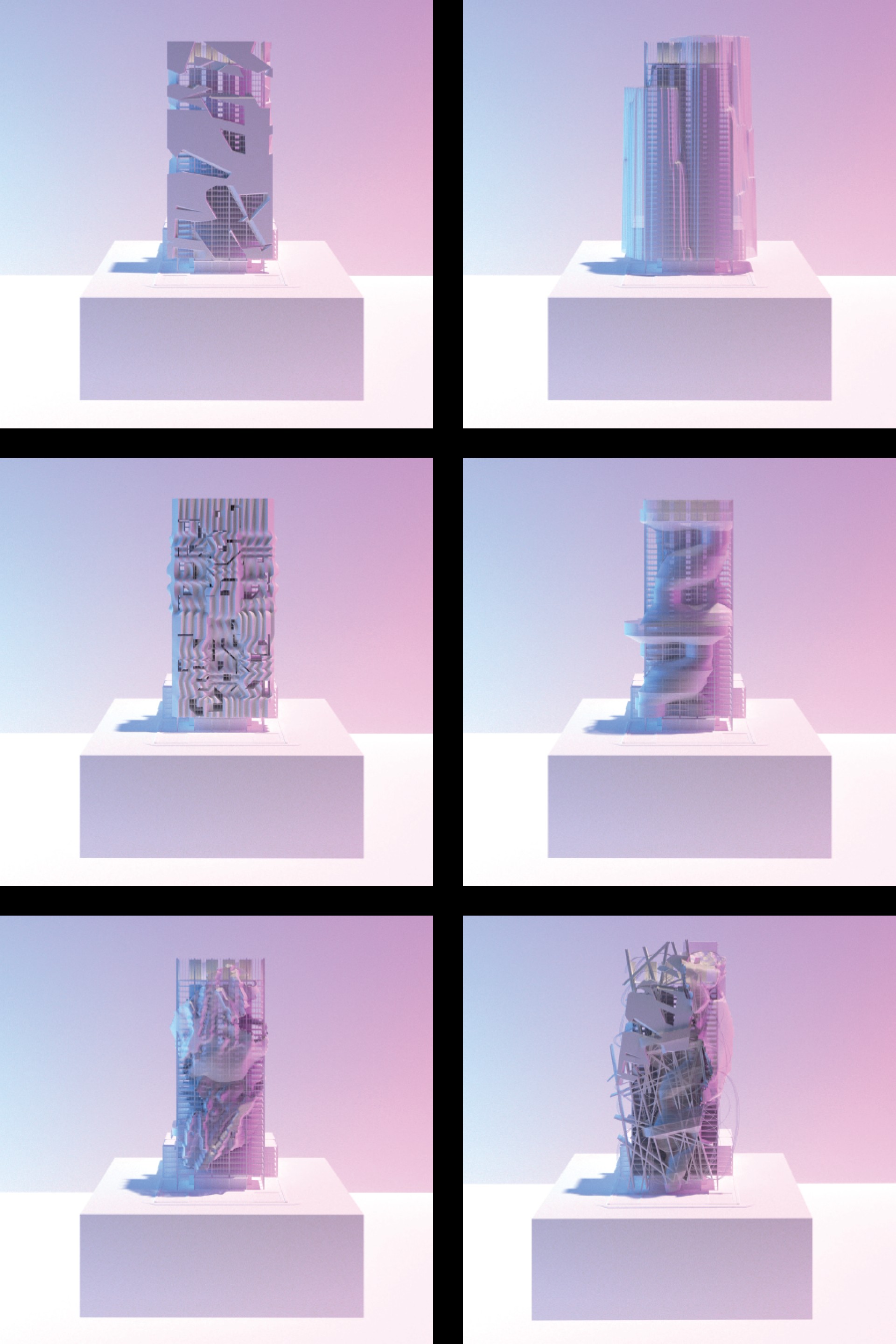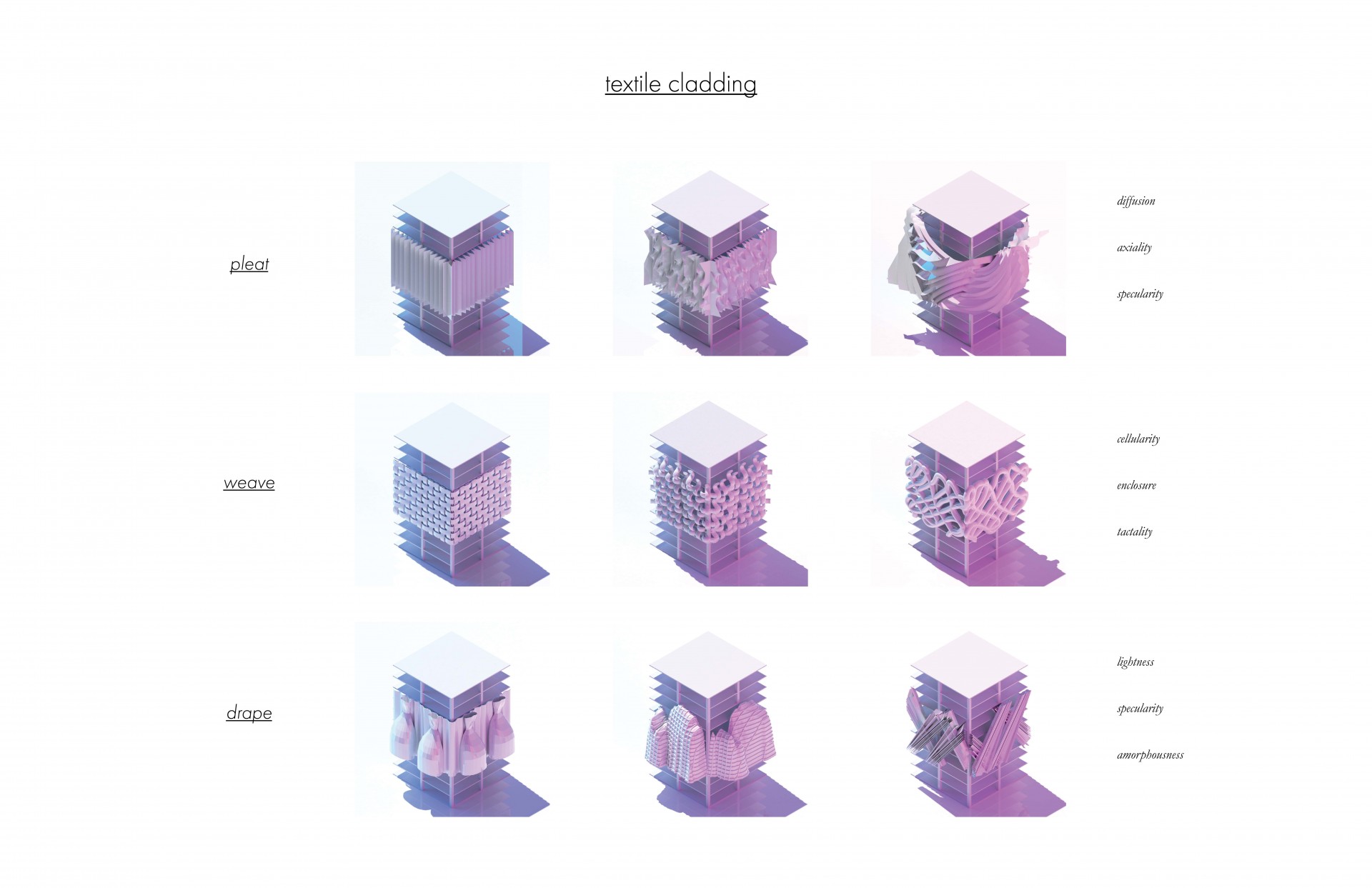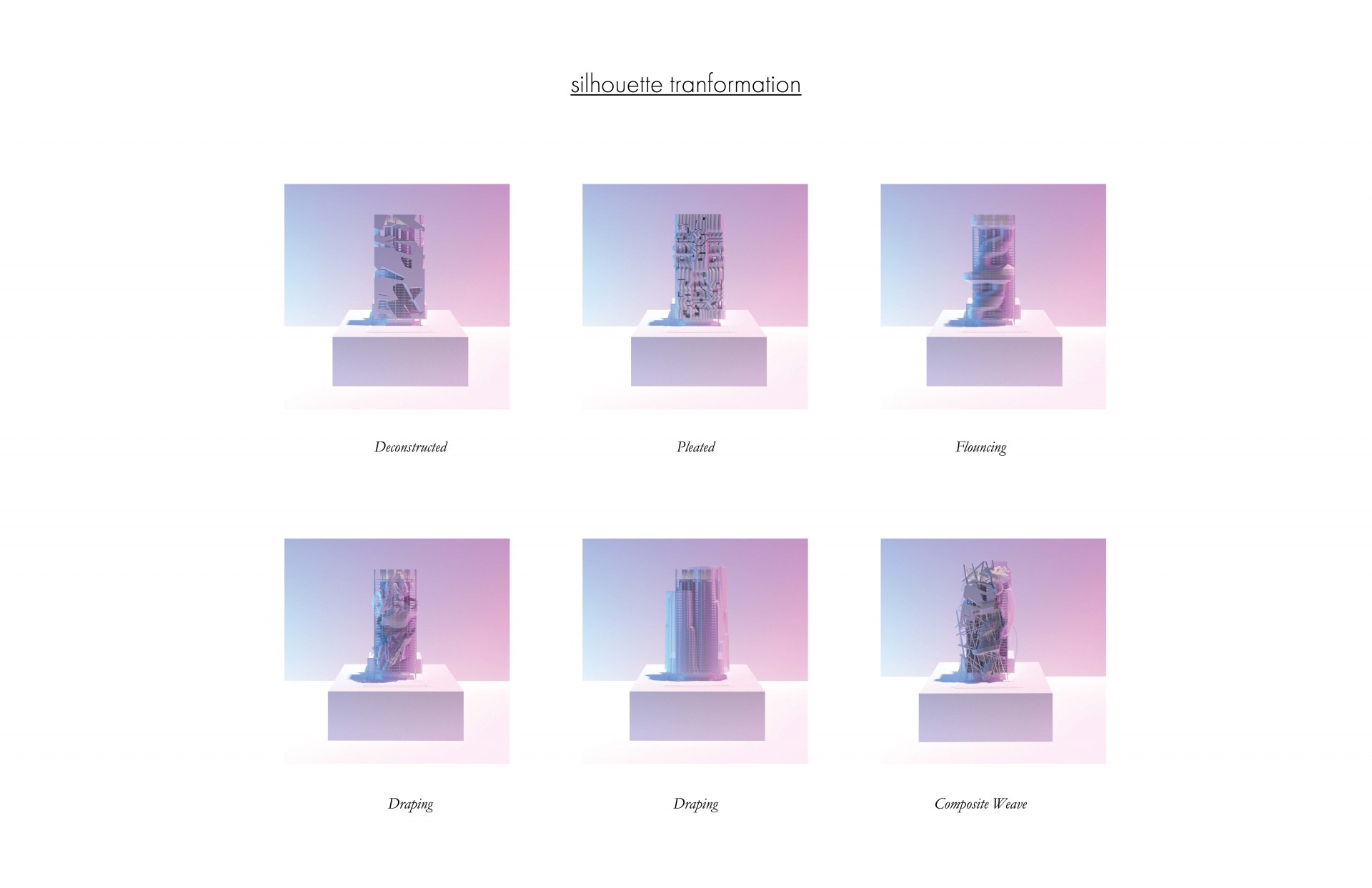Curtains + Couture - Rethinking the Curtain Wall
- Location: New York City, United States of America (USA)
- Year: 2021
- Work Type: Student
- Institute: Syracuse University
- Status: Conceptual
The curtain wall, traditionally an icon of modern architecture, takes its name from curtains, but it seems to be misnamed, to begin with. The translation of curtains to the modern curtain wall seems disingenuous. It echoes what structure does and is a direct translation of it, but it has the opportunity to be autonomous and have a defined form and function. The thesis takes the term curtains seriously and advocates for design specificity in a façade system. Instead of following the linear translation from curtains to the curtain wall, the thesis finds applied complexities within the territory of the curtain wall. The curtain wall will be redefined through intersected properties of curtains and couture.
Curtains have the potential to redefine boundaries of spaces and act as an obscuring device through revealing, concealing, and manipulated layers of visibility. To reimagine the way curtain wall hangs on the structure, the way couture hangs on the body was researched to understand transformations of the fabric within the body region. Combining the spatial conditions and manipulated visibilities from curtains, silhouette transformations from couture, and textile tectonics from both couture and curtains; a new curtain wall is reimagined. New coverings for the Seagram Building are proposed that differentiates and defines space, by creating conditions where new programs can be imagined. The new curtain wall is a spatial system, a complex and layered proposition negotiating varying states of function and sensation.
a lexicon of commonplaces:
“curtain wall, window dressing, skirt board, outskirts, underpinning, foundation, dress, coat, uniform, formal, margin, border, facing, fringe, fabric, fabricate, fashion, fold, bias, tack, cut, alter, pin, pattern, patch.” – Gottfried Semper

.png)
.png)
.png)





